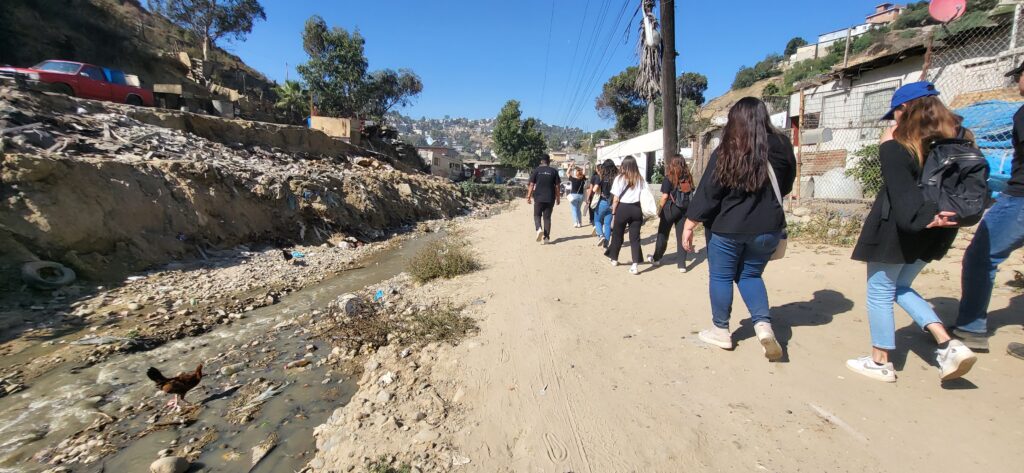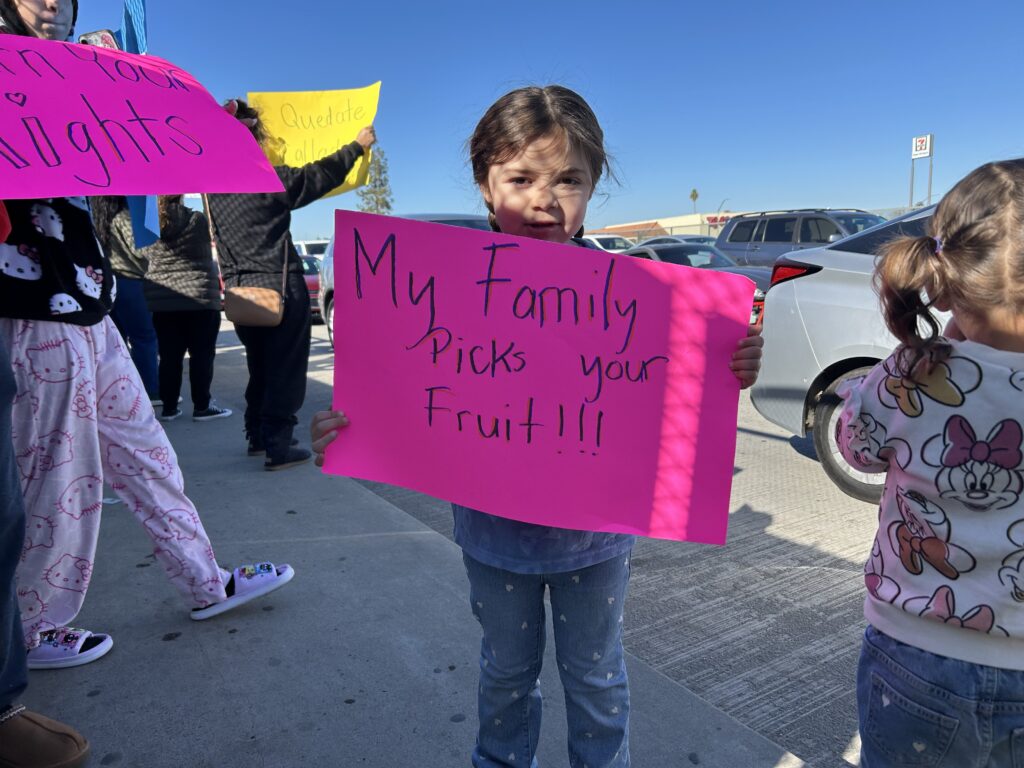The U.S.-Mexico border is a fraught topic in political debate in Congress and between presidential candidates. But crossing it is a key part of training for some prospective bilingual teachers in California to get insight into their future students’ lives.
The dual language and English learner education department at San Diego State University has taken student teachers on four-day trips to visit schools in Tijuana for about 10 years. The goal is for the prospective teachers to learn about some of the experiences that students from Mexico and other countries in Central and South America face and how those experiences might affect students in the classroom.
“We want them to understand, basically, the students we share. Sometimes there could be a student in Tijuana that the next day is in a classroom in San Diego,” said Sarah Maheronnaghsh, a lecturer in the department who helps organize the trips.
She said the opposite is also true. San Diego State students have also met children in Tijuana who had previously been living and attending schools in California but have since been deported.
“A lot of the issues are the same on both sides,” Maheronnaghsh said. “Knowing and having a deep understanding of the kids and where they’ve come from and what they’ve been through is only going to help them in the classroom.”
The San Diego State bilingual credential program was identified by the California Commission on Teacher Credentialing as a model for preparing bilingual teachers. The department offers both online and in-person classes and boasts having the largest graduating class of bilingual teachers in the state.
During the latest trip in November, student teachers visited and taught classes in English and Spanish at three different schools — a school in a very low-income neighborhood on the outskirts of the city, another that has a program for blind students, and a third school inside a migrant shelter. They also visited a local university and watched a documentary about children who travel through Mexico on the top of a cargo train to reach and cross the border.
“We want them to understand, basically, the students we share. Sometimes there could be a student in Tijuana that the next day is in a classroom in San Diego.”
Sarah Maheronnaghsh, SDSU lecturer
The experience was powerful for Erika Sandoval, who was born in a small town in the state of Jalisco in western Mexico and migrated to California when she was 9 years old.
“I cried a lot because it kind of made me connect to what I encountered as a kid, leaving my country and coming here to start over again,” Sandoval said. “I was once that child.”
Sandoval, who is 39, is enrolled in San Diego State’s online bilingual credential program part time, while also working as an aide with special education students in Saugus Union School District in Santa Clarita, in Los Angeles County. She first heard about the program through her son’s kindergarten teacher.
“I knew I wanted to be part of the program, especially because it gave me an opportunity of using my Spanish,” Sandoval said. “Within my friends’ circle, I’m one of the only ones who continues to speak Spanish to my kids. Even my niece and nephew I’m starting to see the language be forgotten and it kind of makes me sad.”
The trip to Tijuana highlighted for her why it’s important for schools to provide resources and support for immigrant children and families.
“A lot of the kids that come to the United States have a story and a reason why they left their country, and because of those reasons they are going to struggle when they go to school,” Sandoval said. “A lot of them didn’t know how to read or didn’t go to school because they were working at a young age.”
She said the trip was also a reminder to not make assumptions about children’s home lives.
“A lot of times we assume that every child has a mom and a dad. But that’s not the reality for a lot of us. A lot of us have left so much behind to be in this country,” Sandoval said.

Another student in the bilingual teacher program, Clarissa Gomez, said her parents and grandparents migrated from Mexico, and she grew up in the Central Valley with many other immigrant families around her. Still, she said meeting the children and families at the migrant shelter was eye-opening.
Many of the students were fleeing violence in other parts of Mexico or in Central America, and some had to leave family behind. One young girl said she was about to cross the border to the United States the next day.
“We had a student who said, ‘Tomorrow we wake up and we make a long journey. I feel so sad that I’ve met you guys and tomorrow I have to leave. I’m scared,’” Gomez said. “That was heart-wrenching.”
Despite all that the children had endured, Gomez said they were eager to learn and share their own knowledge.
She said visiting the shelter and hearing about the children’s experiences will help her as a teacher to understand her students. She’s currently student-teaching at an EJE Academy, a dual-language immersion charter school in El Cajon, in San Diego County.
“I’m expecting that some of the students that I did meet at the shelter will most likely be the students in my classroom,” Gomez said.
Overall, she said, the visit was a reminder of the importance of learning about and respecting students’ cultures and life experiences.
“I know that getting down the standards is important, but there’s so much we can implement by building this culture of, ‘You’re welcome in my classroom and I respect you and your family and your family dynamic,’ and that’s me respecting you as a person.”
Student teachers prepare lessons to teach on the trip, but they also have to be ready to change plans at a moment’s notice. For example, Sandoval and a group of her peers had prepared to teach second grade, but ended up teaching fifth graders at one school and preschoolers at another.
It’s crucial for teachers to learn that they have to be flexible, said Rick Froehbrodt, a lecturer in the department who helps organize the trips.

“With this experience, something always happens, something changes,” said Froehbrodt. “It’s understanding that this is not, ‘Here’s my lesson plan, here’s what I’m going to teach, this is how it’s going to go from start to finish,’ understanding there are so many factors involved that you always have to be prepared.”
Sandoval said at one school, they were able to tour the campus and see fruit trees that staff planted for kids to learn outdoors, as well as Day of the Dead altars that gave her ideas for how to celebrate the holiday at her own school in California.
She said she was struck by how much teachers and children were able to do with the few classroom supplies they had.
“The few things that they have, they make use of them to the best of their ability, and they’re not concerned about sharing their things,” Sandoval said. “Seeing that community was really nice, and it makes you wonder how come a lot of our students in the United States struggle to give much to each other. With the abundance of supplies, they still have such hesitation to share even a pencil with a classmate.”


